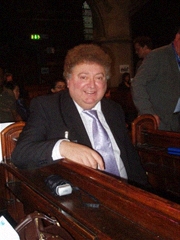Tutor HuntResources Biology Resources
Enymes
Studying Enzymes for A Level Biology
Date : 13/09/2021
One of the topics which often features in A Level Biology question papers is that of enzymes. Why is that? Enzymes control various vital processes that take place in cells. A variety of enzymes control the process of digestion in the alimentary canal. Lipases digest fats, pepsin acts on proteins, and so on. However, enzymes control cell metabolism and all the biochemical reactions occurring in the living cytoplasm. Catabolic reactions involve the breakdown of large molecules into smaller ones often with the release of energy while anabolic reactions are the reverse.
Many of the topics you will learn on your A Level course include enzyme activity within the study material. For example enzymes have an important role controlling the process of aerobic respiration. The metabolic pathway called glycolysis takes place in the cytoplasm and is regulated by specific enzymes at each step. Krebs Cycle in the mitochondria also requires enzyme activity. The dark stage of photosynthesis in green plants requires enzymes which are present in the stroma of the chloroplasts. So what is an enzyme? An enzyme is a biological catalyst. Without enzymes the chemical processes required to maintain life would occur too slowly. Enzymes are proteins and they increase reaction rates by lowering activation energy. More than 5000 chemical reactions require enzymes. One of the earliest examples of enzyme activity was probably observed in 1833 by Anselme Payen in France. He observed the action of what we call diastase on carbohydrates. Louis Pasteur later suggested that yeast was able to ferment sugar to alcohol by a vital force in the yeast. The word enzyme may have been first used by the German physiologist Wilhelm K hne. The word means in yeast and was related to the process of fermentation. Eduard Buchner around 1897 carried out a series of experiments at the University of Berlin. He discovered that crushed yeast cell extracts caused fermentation of sugars to alcohol. Living yeast cells did not need to be present for this to occur. The enzyme in the extract was named zymase. This discovery led to him being awarded the Nobel Prize in Chemistry. As time progressed more enzymes were discovered, named and their activities documented. For example James B. Sumner crystallized urease in in 1926 and catalase in 1937. Later techniques such as X-ray crystallography allowed the structure of enzymes to be determined, an example being the enzyme lysozyme found in tears. Did you know that enzymes are made use of by various commercial and industrial processes? Many washing powders contain enzymes and they digest stains on clothing due to fats, starch and proteins. That is why washing machines may be set to work at 37degrees Celsius (the optimum temperature for enzyme activity). Enzymes are also used to make antibiotics and to tenderize protein meats like steaks.So what will you need to know about enzymes? Exam boards vary but you may need to learn how they are classified into different groups and their chemical properties. You will also need to know how enzymes work and about different types of enzyme inhibitors. The properties of enzymes form the basis of many exam questions and in particular you may have to interpret various graphical representations illustrating how factors such as enzyme concentration, substrate concentration, temperature and pH affect the rate of enzyme-catalyzed reactions.
This resource was uploaded by: Graham

